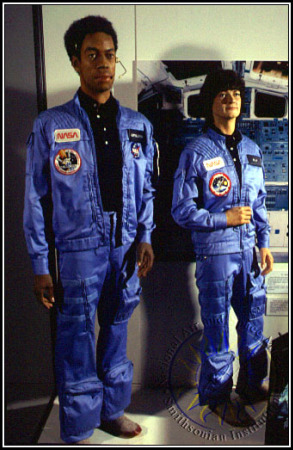Paying Homage to Sally Ride
/https://tf-cmsv2-smithsonianmag-media.s3.amazonaws.com/filer/1979_01510L.jpg)
Ride had been selected as an astronaut candidate in 1978, just after earning her doctorate degree in physics from Stanford University, and working for NASA until 1987. After serving on the crew of Challenger STS-7, she flew on a second mission, STS 41-G, in 1984. Ultimately, Ride became the only person to serve on the investigation committees of both the Space Shuttle Challenger and Columbia accidents, in 1986 and 2003. Post-NASA, she became a professor of physics at University of California, San Diego, and director of the California Space Institute. Her latest endeavor is Sally Ride Science, a science education company she founded in 2001 to motivate children, especially girls, to pursue their interests in science, math and technology. (Last fall, she helped host a Star Party for 150 middle schoolers at the White House.)
.
The astronaut's name made news recently when one of her spacesuits was found in the possession of a Texas man named Calvin Dale Smith, who had stolen it while working for the Boeing division that cares for NASA flight suits.
Unlike the stolen one, though, Sally Ride's flight suit on display at the Smithsonian's National Air and Space Museum was actually worn in space. Ride donated the in-flight suit, now in the museum's Moving Beyond Earth gallery, just after her first mission. It is displayed alongside the suit of another pioneering astronaut Guion Bluford, Jr., who became the first African-American in space, in 1983 as well.
Also on permanent exhibit at the museum, in the Beyond the Limits gallery, is a Hewlett Packard-41C pocket calculator Ride and others used on missions in the 1980s. An acrylic painting of the Challenger STS-7 by artist George McCoy is part of the online exhibit Out of This World.
/https://tf-cmsv2-smithsonianmag-media.s3.amazonaws.com/accounts/headshot/megan.png)
/https://tf-cmsv2-smithsonianmag-media.s3.amazonaws.com/accounts/headshot/megan.png)